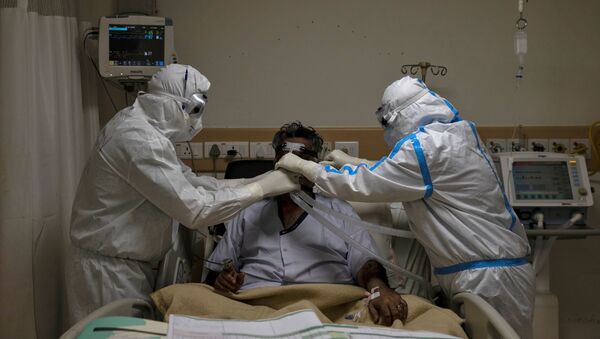India surpassed China in deaths caused by the COVID-19 on Friday with 4,706 deaths reported. According to the World Health Organisation (WHO), China, where the outbreak was first reported in December last year, has registered 4,634 deaths so far.
As per the Indian government, the country’s recovery rate stands at a whopping 47.4 percent which is one of the highest in the world. Out of the 173,763 cases reported, over 82,350 patients have been cured and sent back home.
The government states that timely lockdown and early detection of COVID-19 cases are the main reasons behind the high recovery rate, however medical experts believe that continuous change in discharge advisory is helping the government to hide the facts.
Indian Government’s Revised Discharge Policy
In the latest discharge COVID-19 policy issues on 8 May, the government mentioned that the discharge protocol would vary depending on the severity of the disease and it has been adjusted to a symptom and time based strategy now. According to the Indian Council of Medical Research (ICMR), the apex body for biomedical research, the surveillance data has pointed out that the patient turns negative after 10 days of their test being positive.
According to the advisory, patients with moderate or mild symptoms don't need to be tested before discharge. Therefore mild and moderate ill patients will be discharged from hospitals 10 days after the onset of symptoms and if there is no fever or need for oxygen for three days, the patient can be released.
Only in severe cases will patients be discharged after clinical recovery and after testing negative. Earlier, COVID-19 patients were discharged only after either a chest radiograph has been cleared or after two consecutive test samples were found negative.
Indian Doctors Terms Governments Revised Non-Testing Discharge Policy as ‘Eye-wash’
Speaking to Sputnik, a doctor at a Delhi-based government hospital claims the change in discharge policy is helping the government to hide the actual number of completely recovered patients.
“With the rapid increase in cases in many states, discharging patients without being tested is foolishness. With the rapid increase in cases in many states, discharging patients without being tested can’t be a choice. The step has been taken to preserve testing kits and hide the shortage of beds at the hospitals,” the Delhi-based doctor said.
Pointing out the infectiousness of the patients after the symptoms subside, the doctor said that it is anticipated that with the new discharge policy, more recoveries may be reported but the chances of transmission increase.
“As the new advisory suggests that the patient discharged has to be isolated at home for 7-10 days, it is wrong to presume that people will self isolate themselves. What if the patient is asymptomatic, how would the government keep a track of those patients and what if the person continues to shed the virus after 10 days? To make sure that the virus does not spread, the patient must be tested before being discharged,” the doctor said.
He further suggested that while the government can toot its own trumpet by showing of high recovery rate in the country without conducting the tests, the number of "cured" patients may not actually be fully recovered patients.
According to Lav Agarwal, joint secretary in the health ministry, when the first lockdown was imposed the recovery rate was 7.1 percent which increased to 11.42 percent during the second and rose to 26.59 percent during the third lockdown. Currently in the fourth lockdown, India’s recovery rate stands at over 42 percent.
Another medical expert Dr Behram Pardiwala, internal medicine expert at Wockhardt hospital in Mumbai stated that actually, there is nothing particular about our recovery rates. Compared to our population, our reporting is very low.
“We'll get to know much more if the government does more testing and you get more patients who are coming out positive. It's just that 85% of the COVID-19 patients do not require hospitalization. I have at the moment got about 41 patients underneath me out of which 15 are totally asymptomatic. Just because they're scared they don't want to go home. Another 15 are a little moderate,” Pardiwala said.
He further stated that another seven are where you need to watch them as they still have a temperature and the oxygenation is low. Around four or five are in the ICU. So just about 10 to 12%, actually require ICU treatment.
“The actual recovery is you should see how many of your ICU patients recover? The younger patients are as it is going to recover. There's nothing that's great in that there are so many patients. The local municipality should keep an eye on the home isolation patients,” Pardiwala added.
Most of the doctors Sputnik spoke to have also pointed out that on 8 May (before the revised policy was issued) as many as 16,540 patients had recovered from the virus. However, since then 54,566 people have recovered as per the government. They have also revealed that the chances of the virus spreading are higher if the patients are discharged with tests.
India is under its fourth phase of countrywide lockdown. With each lockdown, the government had given relaxations to several sectors along with allowing essential services to function.


